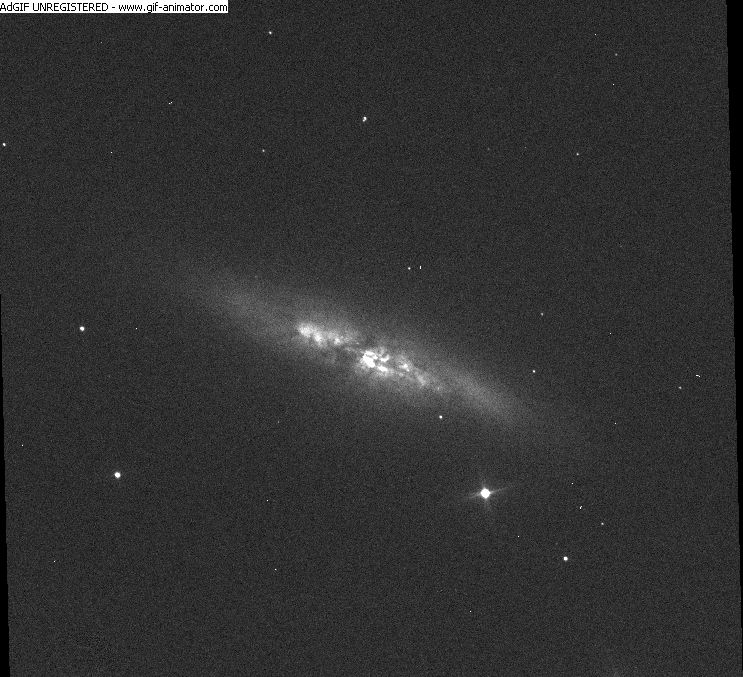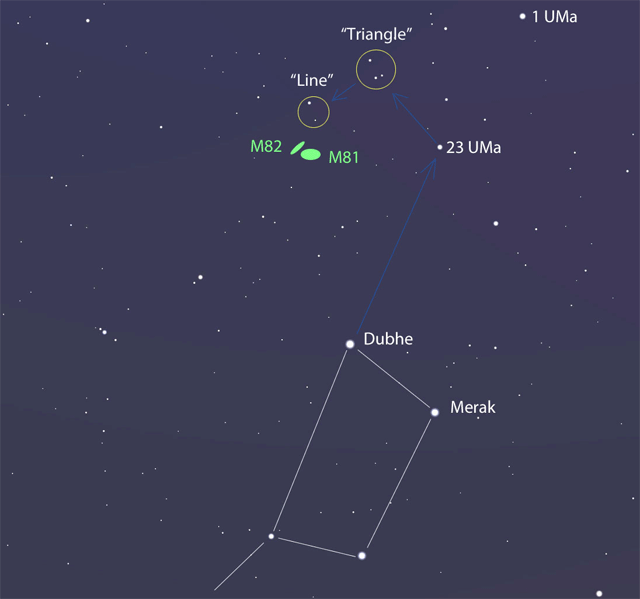A supernova was discovered in the neighboring galaxy M82. Blast after 2 weeks

Great news circled leading astronomical sites. In the neighboring galaxy M82, which is often chosen for observations by amateur astronomers, a type I supernova is discovered! The white dwarf is getting brighter every day, an explosion is expected in about two weeks. At the time of the outburst, the supernova will glow many times brighter than the original galaxy. The object is assigned a preliminary number PSN J09554214 + 6940260 .

Photos of the galaxy M82, taken on 11/22/2013 and 01/22/2014
')
M82 is 12 million light-years away from us, so a flash does not threaten our species, but those who are in that area of the Universe cannot be envied. At the time of the explosion, a supernova in a few seconds releases an amount of energy equal to 10 51 erg (standard value foe : fifty-one ergs). For comparison, our Sun for all the time of its existence (10 billion years) will allocate only 1.2 foe. And here almost as many in a few seconds!
PSN J09554214 + 6940260 will be the closest supernova explosion to us since the SN 1993 J explosion in 1993, which occurred alongside the galaxy M81.
The location of the galaxies M81 and M82 is shown in the diagram of the starry sky. They are perfectly visible from almost all positions in the northern hemisphere.

The easiest way to find first is a triangle near the bright star 23 UMa, next to it are a couple of stars, under which are the galaxies M81 and M82.

It is curious that three days before the official announcement of the existence of a supernova in M82, it was accidentally filmed by an amateur astronomer - and even showed on Sunday a astronomical video podcast ( video , see 21 minutes 36 seconds, the photo turned 180 ° there). Apparently, neither he nor the leading podcast ever realized that there was one more star in the galaxy than usual.

According to preliminary observations , on January 16, the supernova had an apparent magnitude of 13.9, on January 17 - 13.3, and on January 19 - 12.2. To see it now, you need a telescope with a diameter of at least 8 cm. It is assumed that at the time of the outburst the supernova will increase the brightness to the 8th magnitude, so that it can be seen in ordinary binoculars. To the naked eye, we can observe only objects of magnitude 6 or brighter.

The illustration shows the evolution of a typical supernova: a superdense white dwarf "sucks" matter from a companion star and heats up as it gains mass. When the critical temperature reaches 3 × 10 8 K, thermonuclear ignition of the carbon – oxygen mixture occurs. The star explodes when it reaches the Chandrasekhar limit (1 foe energy is required).
Source: https://habr.com/ru/post/210016/
All Articles